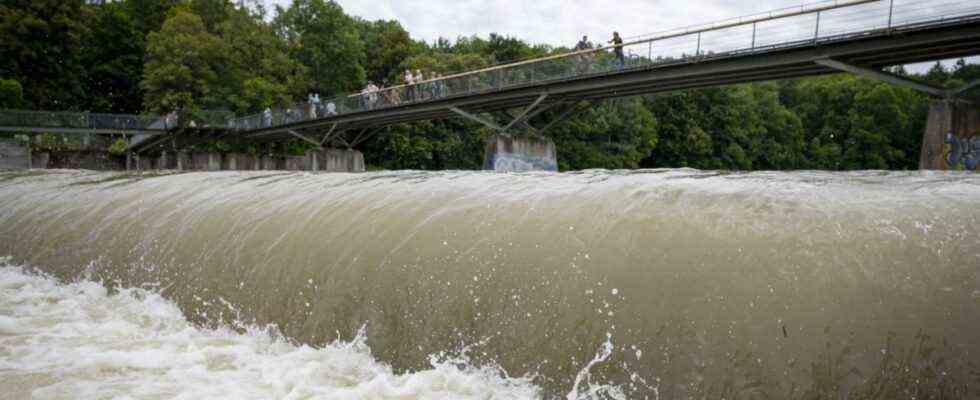It is always dangerous when swimming in the Isar, especially at the Marienklause in Thalkirchen. In mid-July, a girl and three men had to be rescued by the fire brigade and water rescue service, and a 14-year-old has been missing since the weekend. Michael Greiner from the Wasserwacht München Mitte knows the terrain.
SZ: Why is it so dangerous at Marienklause in particular?
Michael Greiner: There is an installation in the river, a so-called culvert. A water roll forms there when the water level is higher, and that is treacherous.
Until recently, bathing in the Isar was generally forbidden because of the flooding – was that allowed too early?
You would have to ask the authorities that. But the roller is already forming well below flood warning level one.
There are signs warning of danger to life – why do people go into the water anyway?
I can’t say that, I haven’t asked anyone about it yet. The only way I can explain it is that there is a nice waterfall at this point when the water level is normal, and people cannot imagine that it will get worse.
Do you recognize such a water roller?
On the surface you can only see water mushrooms. You can see that the water shoots over the edge of the installation. Then it hits the ground and turns back to the obstacle, the culvert.
And when you’re in there in one of those cylinders, is it already too late?
You can imagine it like in a washing machine: They are turned over and over again and pushed down, within seconds you lose your orientation, you don’t know anymore: where is down, where is up? We only posted an impressive video on our Facebook page in July of a log that had been trapped in the roller for hours.
Shouldn’t the position be blocked? Or at least constantly monitored?
The water watch has stations on the Flaucher and on the Marienklause, which are manned between May 1st and September 30th on weekends and public holidays, and if necessary, if it is foreseeable that many people will come. But we do it on a purely voluntary basis. We cannot do this around the clock every day.
What can you do when someone is in danger?
A rescue attempt will always look like we throw a throw bag with 20, 25 meters of rope from the bank so that the person can hold on to it first. And then we try to pull the person out by the rope. Colleagues who go into the water are also secured with ropes. There always has to be someone on land to hold. By the way, we also advise all helpers: it’s better to hold out a branch to hold on to, never jump after it, it won’t help anyone! Then we would have two, three, four people who we would have to save.

